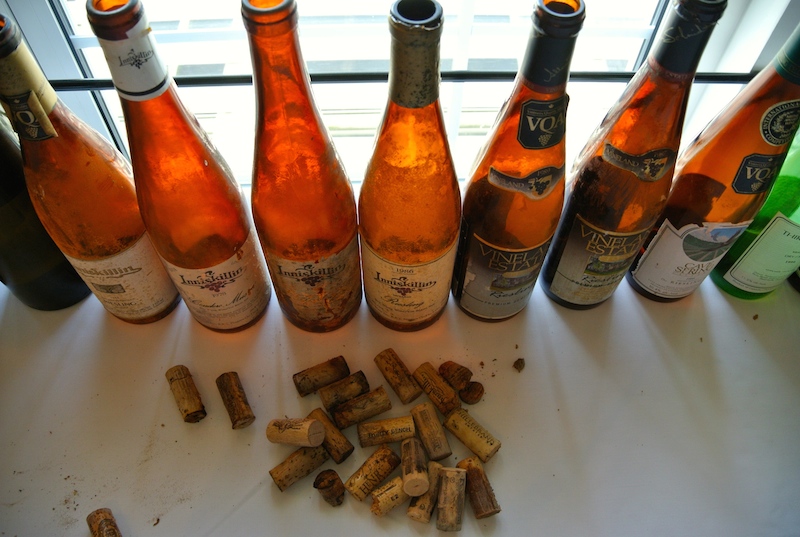
Winemaker J.L. Groux arrived with a magnum of 1998 Trius Riesling and a bottle of Kir “in case we need to rescue it.”
Other people, 19 in total, brought their own versions of well-aged Niagara Rieslings, treasures from the past that we had no clue as to how these bottles had survived over the years, in some cases decades.
The oldest bottle of the tasting was an Inniskillin 1979 (we think it was 1979 as the 9 was obscured on the tarnished label) and the rest, for the most part, were from the 1980s and 1990s with a few “reference” Rieslings for perspective.
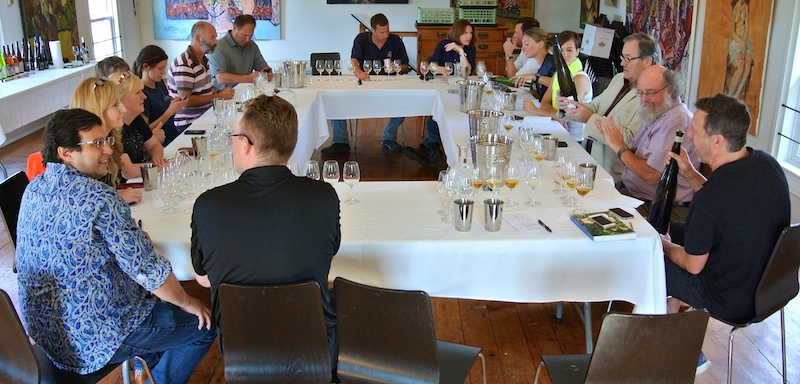
It should be noted that the modern era of winemaking in Ontario only began in 1974 when Inniskillin was granted the first new winery licence since 1916 Prohibition. Within a few short years, more wineries opened and were integral in establishing a new industry through their pioneering efforts with vinifera grapes.
The year 1979 was significant for the fact that German vintner Herman Weis bought 50 acres of land in Niagara and planted Riesling in the St. Urban Vineyard at what is now Vineland Estates.
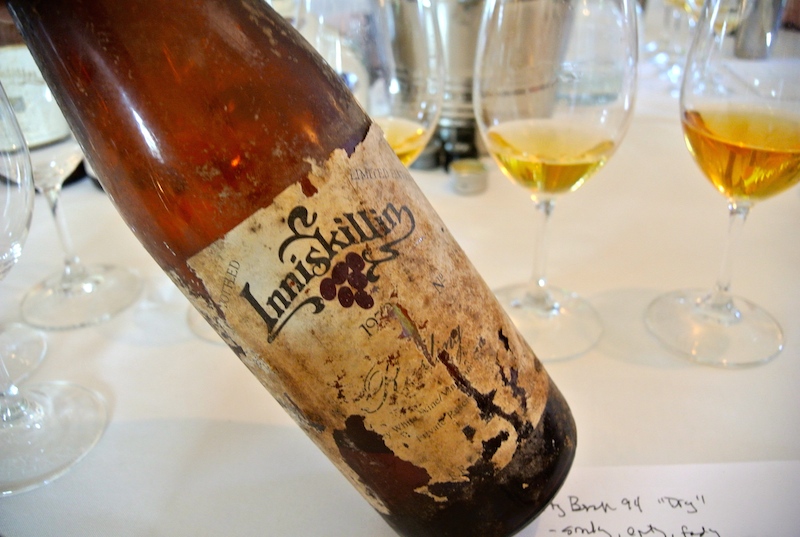
Only a year before that, early vinifera vineyards were established by Paul Bosc Sr. at Chateau des Charmes and the Pennachetti family on Cave Spring Vineyard.
Many of the wines that were brought to the tasting pre-dated the Vintners Quality Alliance, established in 1988 and created to set out geographic appellations and introduce strict production standards that became law in 1999.
So it’s safe to say that the older Rieslings of the 1980s and 1990s were experimental as winemakers were still trying to figure out what worked best in the harsh climate of Ontario.
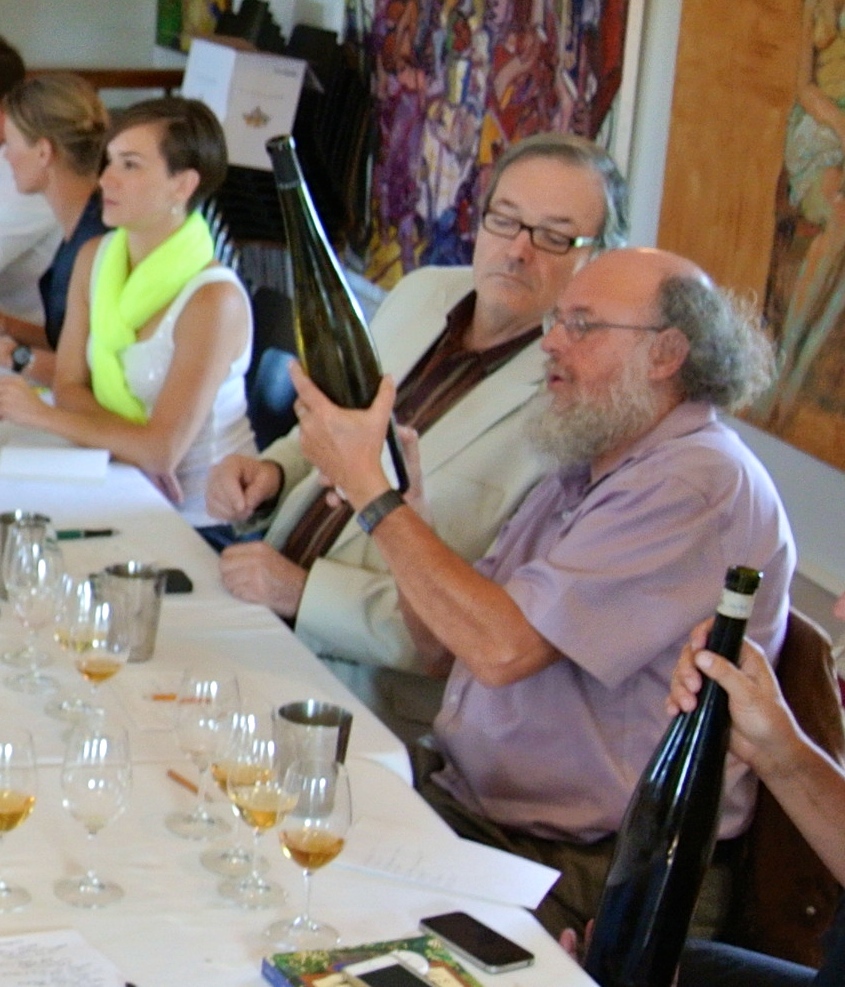
As J.L. Groux said when asked how his 1991 and 1998 Trius Rieslings survived the years in such good shape he had a quick answer:
“We had no idea what we were doing back then.”
So, there are lessons from the past, but unfortunately, winemakers were so focused on making the best wines they could from the new push toward vinifera grapes that we may never know what those secrets are.
As winemaker Craig McDonald said later of the tasting:
“I know I speak for everyone, and it was an absolute treat to delve into an important and fascinating slice of our history.”
But perhaps Vineland Estate winemaker Brian Schmidt said it best in a follow up note:
“This was a such a great opportunity for us all. To listen and participate in a discussion about our history, the clear and not so clear memories of vintages past, the powdery mildew year, the black rot year, the hot years, the rainy years, the great years, the not so great years. We learn from these moments … we gain insight into future vintages.
“This was absolutely amazing.”
The idea for the Old Riesling tasting was a simple one: Bring together a small group of tasters — they included winemakers, marketing people, consultants, and one Dr. Belinda Kemp, CCOVI Scientist, Oenology, at Brock University — who would dig deep into their own cellars for their pre-2000 Niagara Rieslings.

The event was hosted at Henry of Pelham by president of the winery, Paul Speck, in the events room above the tasting facility on a glorious Friday afternoon.
The wines, nearly 30 of them, were placed in some sort of order from dry to sweet with the reference wines poured first.
The tasters included: Speck, Groux (winemaker at Stratus), Schmidt, McDonald (senior winemaker at Andrew Peller Limited), Kemp, Chantal Gareau Smith (commerce specialist at Andrew Peller, bona fide Riesling lover and she also provided the photo at the top of this post), Jay Johnson (Flat Rock winemaker), Marcel Morgenstern (manager of PondView winery), Ann Sperling (Southbrook, Sperling Vineyards, Versado winemaker), Peter Gamble (Sperling Vineyards, Versado, Benjamin Bridge), Amelie Boury (Chateau des Charmes winemaker), Sandrine Bourcier (Henry of Pelham winemaker), Chris Robinson (assistant winemaker of Big Head Wines), Matthew Speck (Henry of Pelham viticulturist), Magdalena Kaiser (director of public relations – marketing & tourism at Wine Country Ontario), Shantal Silverthorne (Henry of Pelham lab supervisor), Kent Macdonald, cellar supervisor Henry of Pelham, and myself.
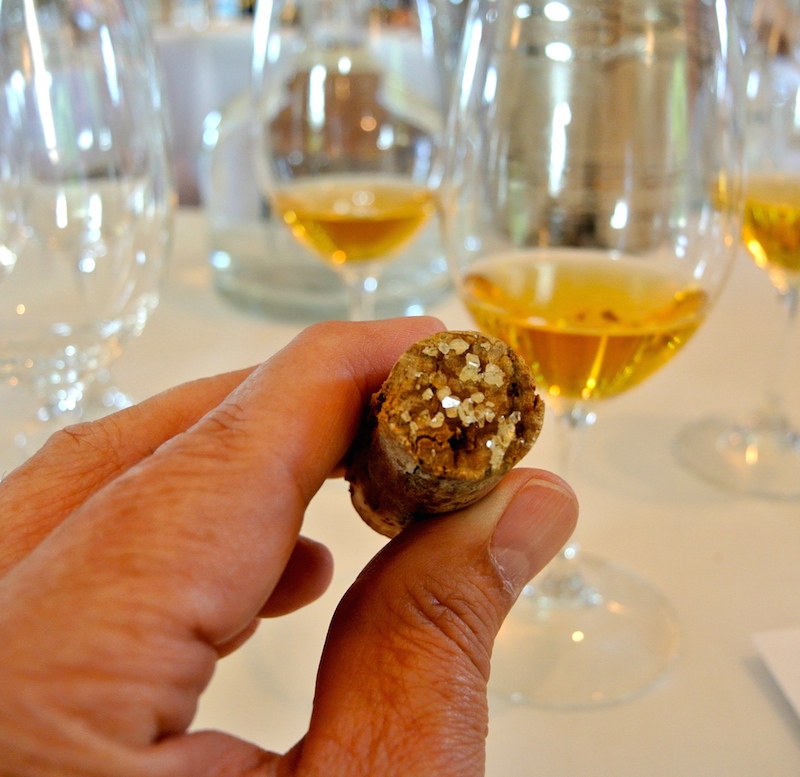
The most fascinating aspect of the tasting, likely the most ambitious (and last?) gathering of old Niagara Rieslings in one place ever, for me was the randomness of what survived through the years. There was no pattern of evidence as to why one wine would evolve so graciously while others did not. It seemingly had little to do with residual sugar (some dry wines were unbelievably fresh for their age). Acidity can be a factor, but let’s face it, acid has never been a problem in Niagara.
Winemaking may have contributed to longevity but some of the veterans around the table said everyone was just trying different things to make up for the various conditions thrown at them, be it vineyard disease, wet conditions or cool/hot vintages.
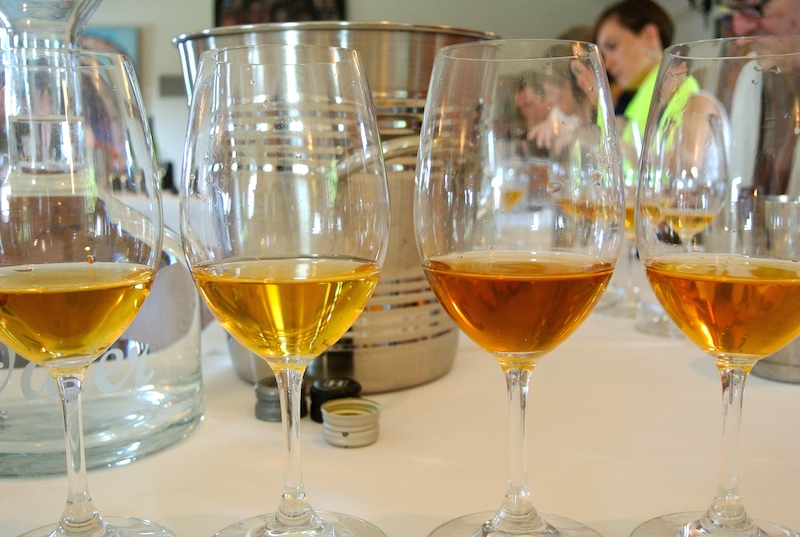
I like that there was more experimentation in the old days. Oak was used more often and certainly contributed to the interest in the wine after considerable age. Botrytis was also employed more often, either by accident or by design, than it is today.
Other curiosities were on the label. No one really knew what “reserve” meant on the label and “dry” was a moving target from not so dry to very dry. The emerging importance of VQA was also evident as some of the first wines that achieved the VQA standard used a giant-size emblem on the bottle.
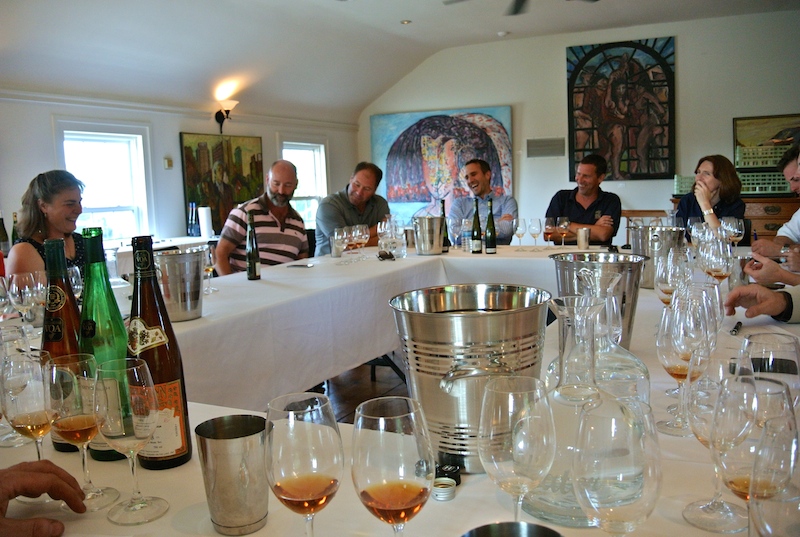
Riesling is an under-appreciated grape in Niagara. Nearly all wineries produce it in one form or another yet it still languishes in the shadow of Chardonnay, Pinot Noir and Cabernet Franc, to some extent.
Why in the world do we not celebrate this grape, which I believe is done better here than any other varietal, with the kind of pomp and circumstance that Chardonnay enjoys? Why isn’t there a Riesling celebration beyond the Riesling Experience, held for trade only, once every two years? Why does Toronto host a 31 Days of German Riesling when we have such incredible Rieslings in our own backyard?
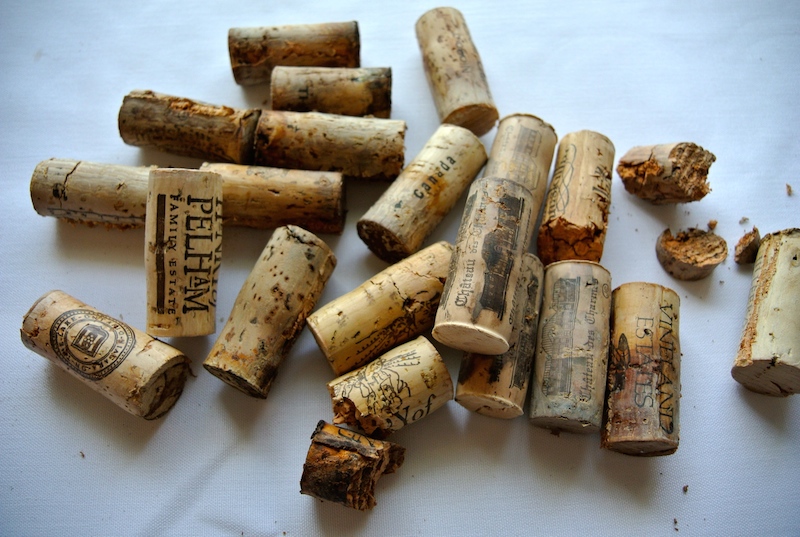
All these questions need to be addressed.
Here are some brief notes on some of the old Rieslings we tasted. It should be noted that one of the wines we opened was corked.
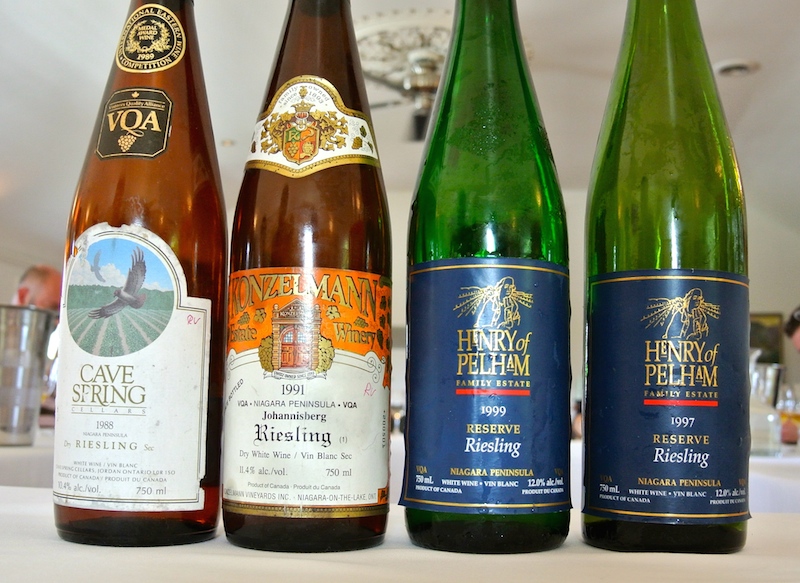
Henry of Pelham Speck Family Reserve Riesling 2009 — A racy, mineral-laden wine with juicy lemon and grapefruit notes and a hint of petrol just emerging.
PondView Riesling 2014 — Tropical fruits, citrus, rich and layered.
Hillebrand Showcase Riesling 2006 — This was extraordinary with a smoky, lanolin thing going on and such depth of flavour.
Flat Rock Cellars Nadja’s Vineyard 2004 — What a treat this was and a wonderful example of why you should age your Niagara Rieslings. Still shows freshness on the nose but well-integrated fruit and acidity on the palate.
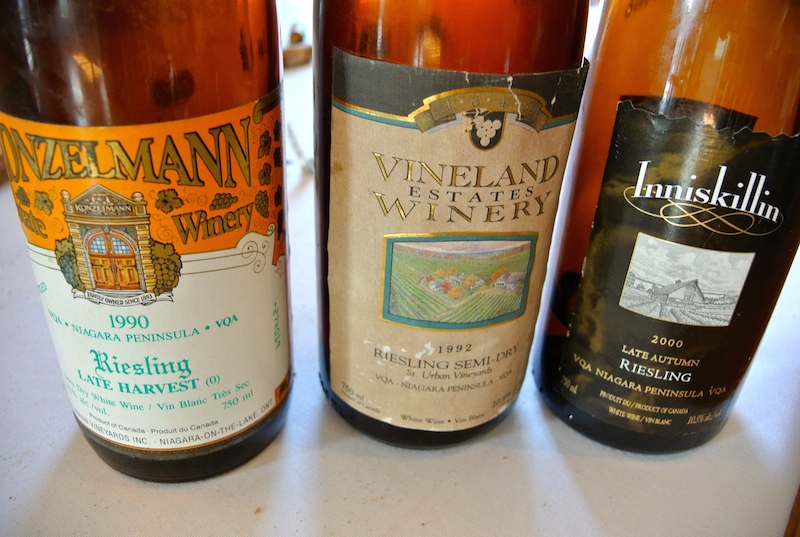
Henry of Pelham Riesling Reserve 1997 — Still lively and showing apricot, honeycomb and lime through a vibrant core.
Henry of Pelham Riesling Reserve 1999 — Still fresh and juicy with grapefruit, lime and lanolin with attractive petrol notes.
Konzelmann Johannesburg Riesling 1991 — Passed prime, fruit break down.
Cave Spring Cellars Dry Riesling 1988 — Funky dry extract on the nose but gorgeous on the palate, lovely texture and soft fruits with still some vibrancy.
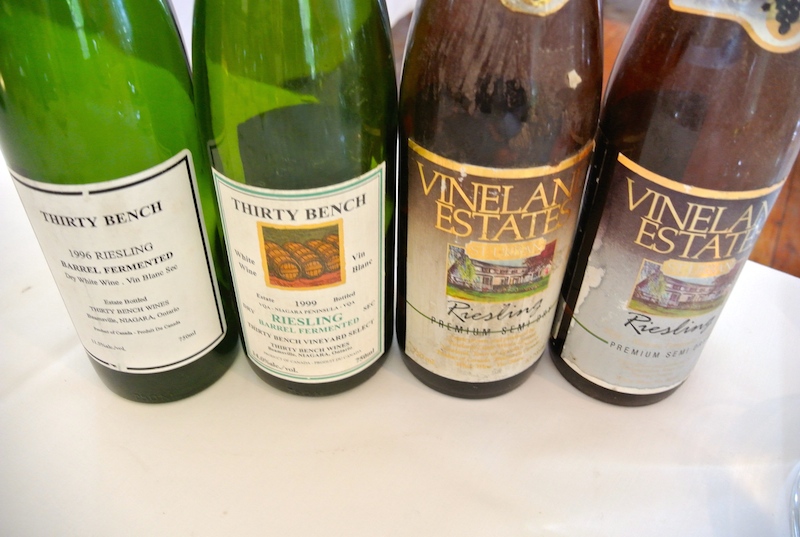
Thirty Bench Winemakers Barrel Fermented Riesling 1996 — Lush, spiced apple, sweet citrus and still plenty of verve on the palate.
Thirty Bench Winemakers Barrel Fermented 1999 — Beautiful integrated spice, apricot, peach compote and honeycomb. Such a treat.
Vineland Estate Premium Semi-Dry Riesling 1987 — Gorgeous tertiary flavours, fully evolved with an interesting earthy note and a sweet wild honey finish.
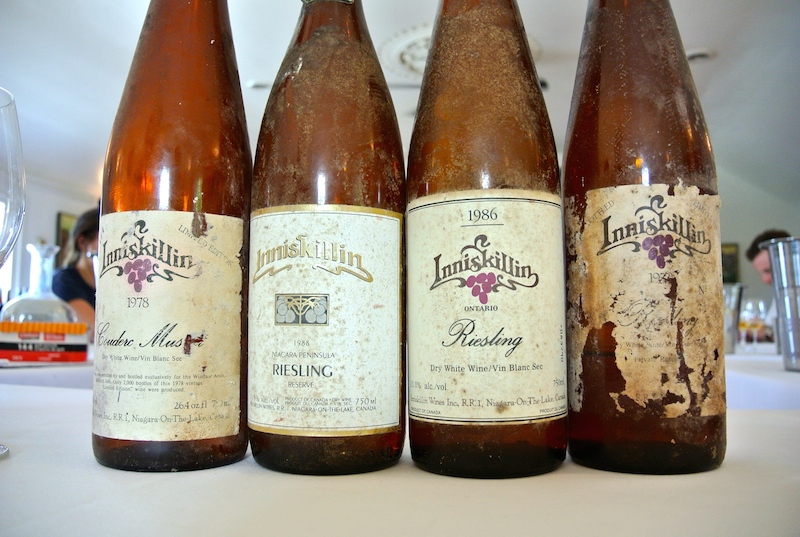
Vineland Estate Premium Semi-Dry 1989 — Fantastic nose, beautiful texture, a great showcase for older Rieslings in Niagara. Muted citrus, honey, ginger spice and still lively.
Thirty Bench Winemakers Dry Riesling 1994 — Smoky, earthy, fading but wonderful texture.
Trius Dry Riesling 1991 (in magnum) — One of the superstars of the tasting. Incredibly, there was still freshness on the nose with grapefruit, hay, glorious petrol notes, lanolin and vibrancy.
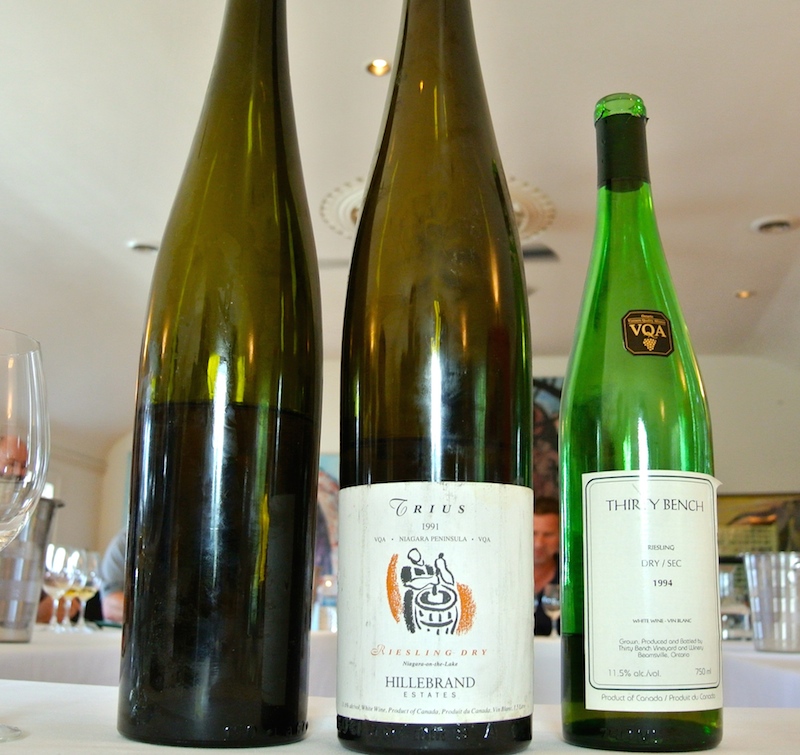
Trius Dry Riesling 1998 (in magnum) — Another good bottle with a nose of honeysuckle, sweet citrus, honey and peach compote. Gorgeous.
Inniskillin Riesling 1979 — A total shock that this Riesling was still kicking and able to provide to some pleasure.
Inniskillin Riesling 1986 — Another superstar of the tasting with a rich fruit profile, smoke, earth, incredible depth of flavour, honey, dried apricot and a lively finish.
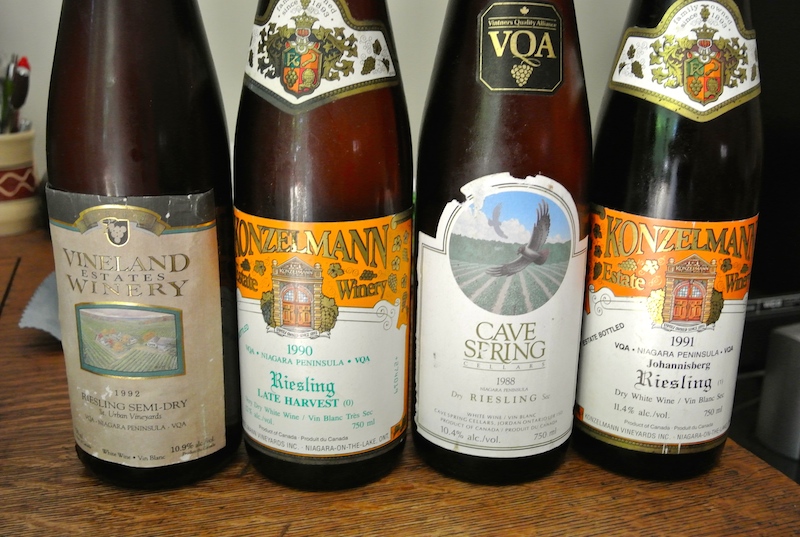
Inniskillin Reserve Riesling 1988 — Another fresh and delicious Riesling with perky, integrated fruits and a note of petrol and lanolin.
Konzelmann Late Harvest Riesling 1990 — Oddly, listed as a “0” on the sweetness scale despite being a late harvest wine, this was a nice wine at this stage. Some smoke, earth, apple skin, ripe apricot and white pepper notes.
Vineland Estate Semi-Dry Riesling 1992 — This is Vineland’s “entry level” Riesling and a fine example of aged Riesling that you can buy a lot of to experiment with. It has a certain freshness with citrus, lime, apple and lanolin with a firm acidic backbone.
Inniskillin Late Autumn Riesling 2000 — Another affordable Riesling that ages well. So lush and dripping in honey and fruit.
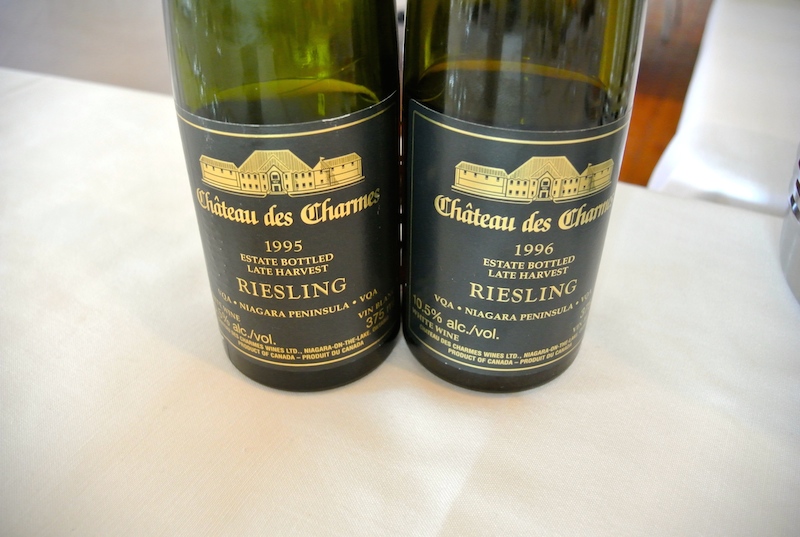
Chateau des Charmes Late Harvest Riesling 1995 (in 375 ml bottles) — Both these late harvest beauties from CdC showed well at the tasting and, in my opinion, were both in the prime of their perfection. Notes of caramel, tropical fruits, compoted fruit and wild honey. Wonderful depth of fruit.
Chateau des Charmes Late Harvest Riesling 1996 (in 375 ml bottles) — Very similar to above with more caramel notes and rounder, riper fruit.
The last word on the tasting goes to J.L. Groux.
“I was indeed happy that the Kir was useless and got Niagara Rieslings’ ageability raised big time in my esteem.”
Couldn’t have said it better myself.






Comment here